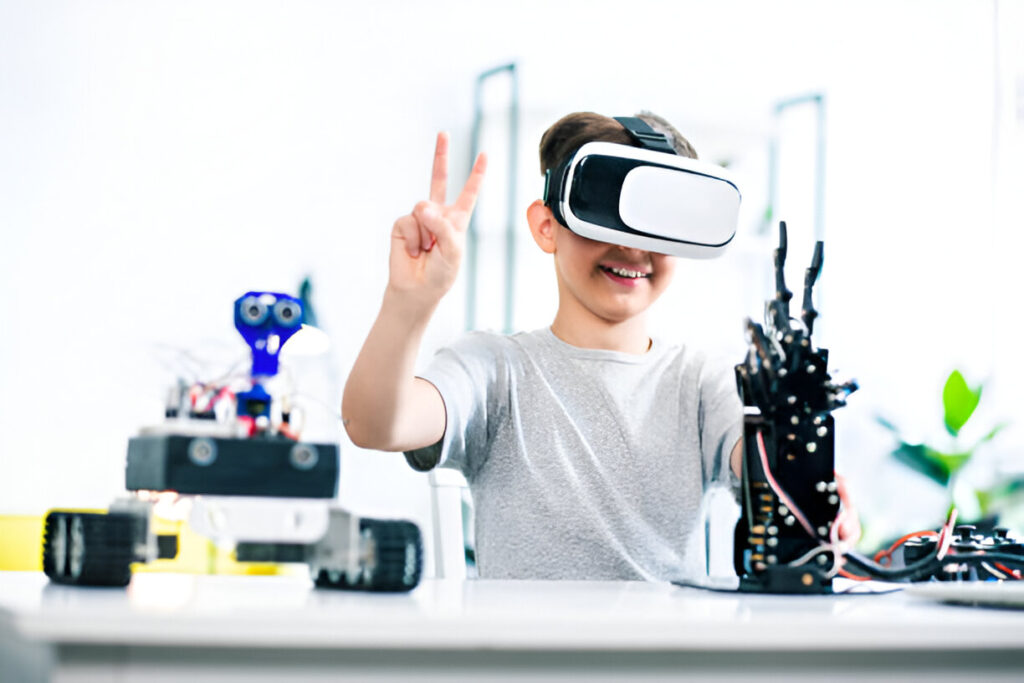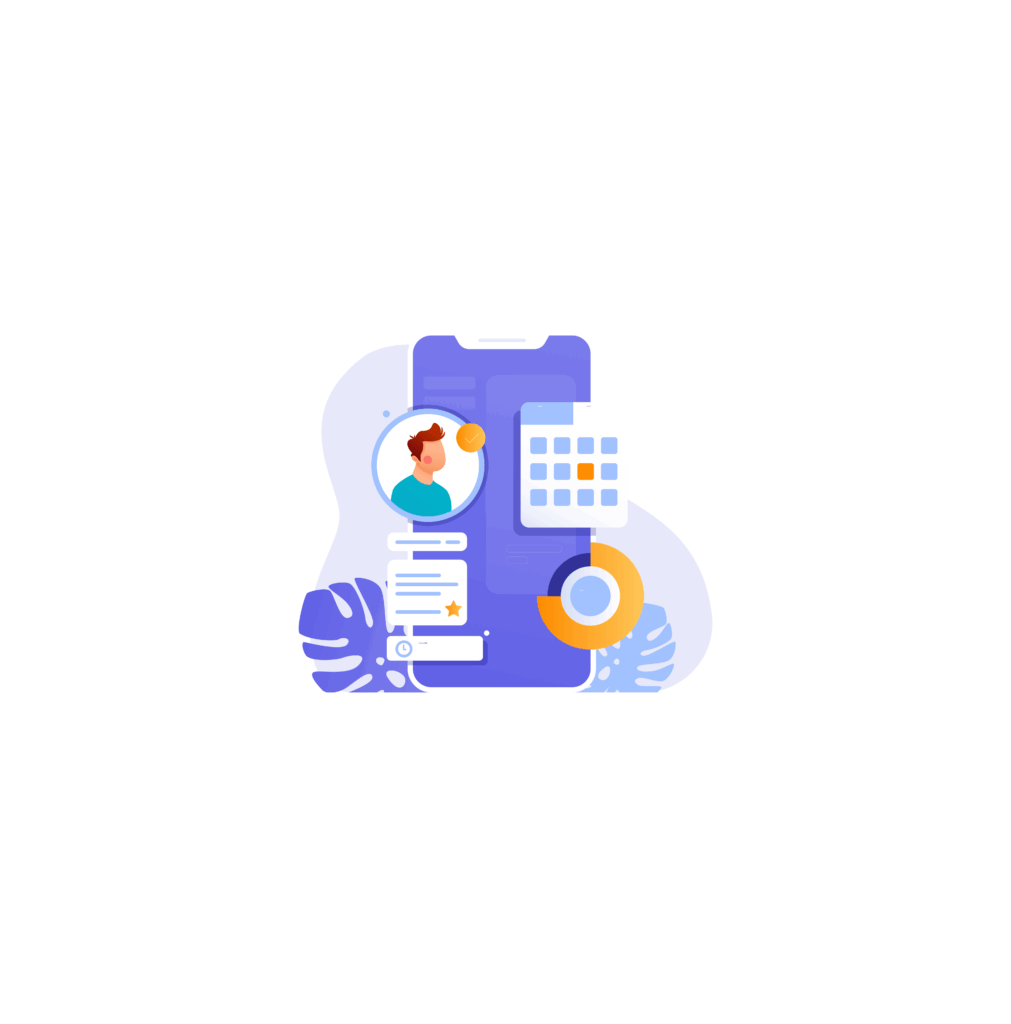The relentless march of technology is undergoing rapid transformation, reshaping industries and impacting daily life in unprecedented ways. Emerging tech trends like artificial intelligence, quantum computing, the IoTs unlock new possibilities but raise challenges, including privacy and ethical concerns.
According to a recent study, advancements in AI and automation alone are projected to boost the global economy by over $15 trillion by 2030. This exponential growth is setting a fast pace, impacting everything from healthcare and finance to transportation and manufacturing.
In particular, sectors like healthcare, finance, real estate and logistics are experiencing revolutionary changes, while society navigates the opportunities and risks these technologies present.
While many industries are quickly adapting, it’s essential to be aware of both the potential and the risks associated with these new developments. Staying informed can help businesses and individuals alike to make the most of these changes, ensuring a future that is both innovative and secure.
In this article, we’ll explore the key technological trends defining our future, looking at how they’re impacting our world and what they mean for individuals, businesses, and society as a whole.
Top 8 Tech Trends Shaping our World
1. The Rise of AI and Machine Learning Innovations
Artificial intelligence is the most significant technology trend today. AI and Machine learning are transforming industries by enabling computers to learn from data and by performing tasks that traditionally required human intelligence. In recent scenarios, generative AI are at the forefront unlocking new ways of delivering realistic images, automating code generation, crafting personalized marketing content, and simulating virtual simulations for training and gaming.
Here’s how AI and machine learning is making an impact in multiple key industries.
- In healthcare, AI aids in diagnostics and personalized medicine, with innovations like Google’s DeepMind model, which can diagnose eye diseases as accurately as human specialists.
- In finance, AI enhances fraud detection and streamlines document review, as seen in JPMorgan’s COiN platform.
- Autonomous vehicles from companies like Tesla and Waymo rely on AI to analyze real-time sensor data for safe decision-making.
Similarly, AI-powered natural language processing (NLP) models, like OpenAI’s GPT, have revolutionized customer support.
Although AI’s rapid adoption raises ethical challenges, including algorithmic bias, job displacement, and data privacy issues. Companies like Google and Microsoft are addressing these challenges, while regulations like GDPR aim to protect privacy in AI applications.
When it comes to leveraging AI and machine learning, most companies focus on one thing: Creating new AI-driven projects and tools. But you might not realize that adopting your existing AI solutions can also yield positive results for your company. For example: Suppose a retail company applied an AI-powered recommendation engine on its e-commerce site that analyzes customer behavior to suggest products. This tool has already shown success, increasing revenue to 35% and receiving positive feedback from users.
2. Internet of Things (IoT) and Smart City Solutions
IoT is facilitating our interaction with the physical world through connecting devices and data-driven insights. The key components of IoT consist of sensors that gather data, connectivity that facilitates communication between devices, data analytics that process and interpret this data, and cloud computing that stores vast amounts of information.
Real-world applications of IoT are diverse, encompassing smart homes with automated lighting and security systems, smart cities focused on efficient urban planning and traffic management.
Here’s how several key industries are currently exploring IOTs.
- In healthcare, IoT enables remote patient monitoring, allowing healthcare providers to track vital signs and health metrics in real time through wearable technology, leading to timely interventions and improved patient outcomes.
- Likewise, IoT enhances property management through smart building systems that monitor energy usage and automate maintenance requests in the real estate industry, ultimately improving tenant satisfaction and operational efficiency.
- Autonomous vehicles from companies utilize IoT technology to connect various sensors and systems, enhancing safety features and optimizing driving experiences through real-time data analysis.
Whereas in the e-commerce sector, IoT enables inventory management and customer engagement, providing retailers with insights into shopping behavior and streamlining supply chain processes. Moreover, IoT also enables energy saving, waste management, and sustainability, while AI-driven smart cities improve services, boost safety, and reduce carbon emissions.

Nonetheless, for IoT to reach its maximum potential, it is essential to confront challenges such as security and privacy concerns, issues with interoperability among manufacturers, and the need for efficient data management to handle the enormous volumes of information produced.
3. Quantum Computing as a Tech Trend
Once confined to the academic research and experimental labs, quantum computing is taking a leap in 2025 and transitioning towards practical, real-world applications. This advanced technology is on the verge of reshaping various fields, including medicine, materials science, and AI.
Quantum computing utilizes the principles of quantum mechanics to handle complex problems that regular computers cannot solve. The implications of quantum computing are vast and transformative.
In drug discovery, quantum computers can simulate molecular interactions, significantly speeding up the identification of new medications.
In cryptography, they enable enhanced security through quantum key distribution, making data transmission nearly impervious to hacking.
Additionally, quantum computing excels in solving complex optimization problems in logistics and finance, providing solutions that classical computers struggle to achieve.
Quantum solutions for logistics can drastically minimize fuel costs and enhance customer satisfaction through timely deliveries, by identifying the most efficient routes.
Transcending in quantum computing promises to revolutionize problem-solving and drive innovation across industries. However, challenges such as error rates, scalability, and the need for specialized algorithms must be addressed. As researchers overcome these hurdles, we may unlock new capabilities that fundamentally change our interaction with technology and the world.
4. Expanding Frontiers of 5G Connectivity
5G technology, the fifth generation of mobile networks, is set to transform how we consume media and interact with the digital world. With the ability to connect a vast number of devices, 5G enhances the mobile broadband experience, allowing users to download and upload content within an eye blink.
One of the standout benefits of 5G is its ultra-reliable low-latency communication, which is essential for critical applications like autonomous vehicles for safer self-driving and remote surgery. In these scenarios, split-second decisions can save lives, making reliable connectivity crucial.
Moreover, 5G is transforming urban living through smart city applications. By optimizing infrastructure, such as traffic management and efficient waste disposal, 5G enables real-time data exchange that enhances city operations.
Additionally, it enriches virtual and augmented reality experiences by minimizing lag, making immersive applications feel more seamless and engaging. As industries continue to adopt 5G, we can expect a surge of innovative applications that will reshape our future.
5. Emerging Tech Trend in Blockchain
Blockchain technology allows for a secure, decentralized method to record transactions and is currently opening the door to numerous applications beyond just cryptocurrency. Its key features such as decentralization and transparency have benefitted several industries including supply chain management, healthcare, and finance.
In supply chain management, blockchain allows companies to track product origins and ensure authenticity, as seen with IBM’s Food Trust blockchain, which improves accountability and reduces fraud.
In healthcare, blockchain facilitates secure sharing of patient records, enhancing privacy and interoperability among healthcare providers.
Meanwhile, the financial sector benefits from blockchain through faster and more secure transactions, with platforms like Ripple enabling real-time cross-border payments.
As organizations leverage blockchain’s capabilities to streamline processes, reduce fraud, and improve data security, they position themselves for competitive advantage in today’s digital economy. Embracing this innovative blockchain technology can lead to increased customer satisfaction and loyalty, ultimately driving growth and sustainability for businesses in the long run.
6. Augmented Reality (AR) and Virtual Reality (VR) Becoming Mainstream
You’ve likely heard a lot about Augmented Reality (AR) and Virtual Reality (VR) recently. While these technologies are often associated with gaming and entertainment, their applications are gaining traction far beyond that.
AR enhances the real world by overlaying virtual information, allowing users to interact with both physical and virtual elements simultaneously. On the other hand, VR creates immerses users in a fully virtual environment, providing an experience that can transport them to entirely different worlds. .
In the retail sector, AR allows consumers to visualize products in their own environment before making a purchase. For instance, Lowe’s, a home improvement store, and e-commerce brands like IKEA, utilize AR applications that showcase customers how paint colors or furniture will look in their home before making a purchase. This interactive experience significantly boosts customer satisfaction, through enhanced shopping experience and reduces return rates.

Similarly, real estate companies are harnessing VR to offer virtual tours of properties. For example, Matterport, a real estate company, allows potential buyers to explore homes remotely. This saves time and increases accessibility to review the properties.
Hence, businesses that embrace AR and VR in their strategy, not only attract their audience but also streamline processes, enhance customer experience, and drive success in a competitive market.
7. Green Technology and Sustainability as Tech Trends
Many businesses initially viewed green technologies as mere compliance, but nowadays as the demand for cleaner solutions grows, businesses are now integrating them for innovation and efficiency. The global investment in clean technology is expected to be around $2 trillion in 2024, indicating a significant shift towards sustainability.
Green technology aims at delivering sustainable solutions that minimize environmental impact while maximizing efficiency. Renewable energy sources like solar and wind power are gaining popularity for becoming increasingly cost-effective, making it a viable alternative to fossil fuels.
Similarly, the Hornsea Project in the UK, wind farms, focuses on generating electricity without carbon emissions. In the transportation sector, electric vehicles (EVs) are gaining traction.
In the agriculture sector, companies like Trimble Agriculture use data analytics and IoT technology to optimize resource use, resulting in lower chemical use and increased crop yields.
By integrating green technology into their operations, businesses not only reduce their carbon footprint but also improve their bottom line, attract eco-conscious consumers, and position themselves as leaders in the sustainability movement.
8. Cybersecurity Innovation
With the growing implication of computerized systems in businesses to organize business operations, cybersecurity is more vital to protect sensitive data and maintain the integrity of digital systems. Over 60% of small companies report experiencing a cyber incident, resulting in winding up of the business within six months of business.
AI and machine learning now help detect and respond to threats in real-time, analyzing large datasets to spot potential attacks before they cause damage. Darktrace , a cybersecurity platform, uses AI to track unusual activity and autonomously respond to potential attacks. Tools like Okta and Duo Security are also gaining popularity as they enhance security with multi-factor authentication (MFA).
Several organizations are also focusing on employee education to combat phishing attacks,to promote safe online practices. As tech progresses, cybersecurity requires constant vigilance and innovation, making it essential for businesses to invest in robust security solutions and promote a safety-first culture.

Embracing Tech Trends in Business
Today’s rapidly evolving digital landscape requires businesses to proactively adapt technology trends to be relevant and competitive in the market. With rapid advancements in fields like artificial intelligence, machine learning, and blockchain, companies face a crucial decision: adapt or risk obsolescence. According to McKinsey, organizations that effectively leverage technology can see productivity increases of up to 20-30% in their overall efficiency. This suggests the importance of embracing tech trends—not just as a trend follower, but as a necessity for growth and innovation.
Process to Adapt Latest Tech
Identifying the need for technology is easy, but putting it into practice can be quite challenging and is often filled with hurdles. Thus, here’s a breakdown of how to effectively implement new tech solutions in a business setting.
- Identify the business needs and set defined objectives to achieve by implementing new technology.
- Conduct market research to identify technologies that achieves your objectives and consult with industry experts for insights on suitable business solutions.
- Develop a strategic roadmap, including timelines and milestones. Moreover, determine the budget, personnel and other resources for the implementation.
- Start with pilot projects to test new technologies on a smaller scale, without committing extensive resources upfront and gather feedback for adjustments.
- Train your team to ensure effective utilization of resources and promote continuous learning and adaptation.
- Implement the technology across organizations gradually and continuously track the performance based on the defined objectives and make adjustments.
- Collect feedback on a regular basis to identify challenges and refine processes through iterative improvements to enhance efficiency.
The stakes of not adapting tech trends can be high. Companies that fail to embrace such changes risk losing market share to more agile competitors. For example, Blockbuster fell behind as streaming services rose. while Netflix embraced the tech shift, becoming a major force in the entertainment industry. Hence, it is crucial for businesses to swiftly adopt new technologies as ignoring these trends could mean falling behind.
Step Into the Future with Tech Trends
As you prepare for the upcoming year, the tech trends in 2025 will be exciting, but it also presents challenges. The upcoming tech trends promise advancements in AI, quantum computing, IoT, blockchain technology, cybersecurity and green technology. By staying informed and proactive, businesses can develop plans to fit new technologies and create a culture that adapts well, resulting in growth and innovation. Hence, as we navigate this rapidly evolving landscape, it’s essential to embrace change, adapt to new technologies, and prioritize ethical considerations.
Looking for tailored guidance? Connect with a tech expert today to ensure your business adopts the most effective solutions for your needs.
Frequently Asked Questions
Gartner predicts that in 2025, generative AI, 5G, and cybersecurity will be key tech trends. These new technology trends are likely to change the tech sector and affect many industries soon.
Businesses can get ready for new tech changes by focusing on adopting technology. They should talk to industry experts. It’s also important to create flexible business strategies. Lastly, they need to promote a culture of continuous learning in their organizations.
Some jobs might be done by machines, but new tech trends are also making jobs in areas like AI, data science, and cybersecurity. To adjust to these changes in the job market, people need to focus on learning new skills and getting education in these areas that are growing.
5G technology will change industries in 2025. It will offer strong connectivity needed for progress in IoT, AI, and automation. This will lead to new ideas that we couldn’t imagine just last year. IT professionals believe that its effects will reach many fields, including manufacturing and healthcare.



